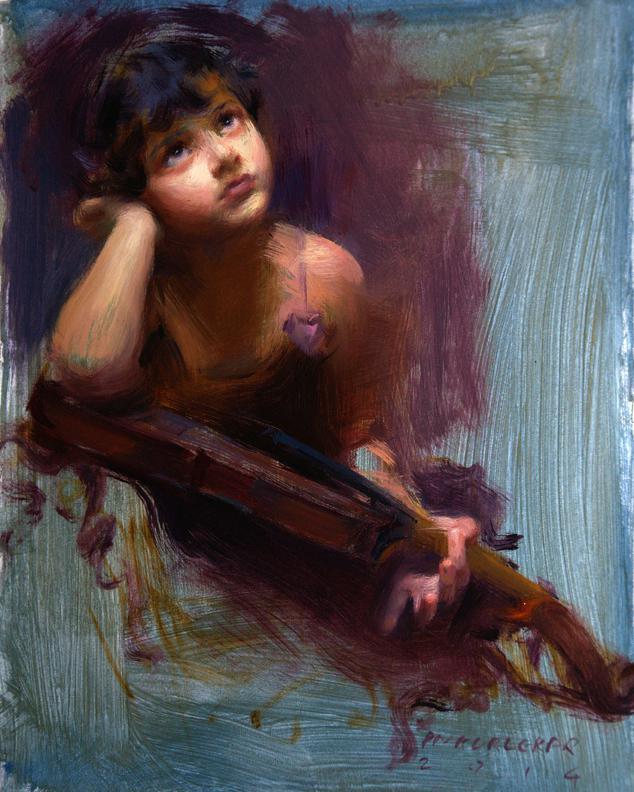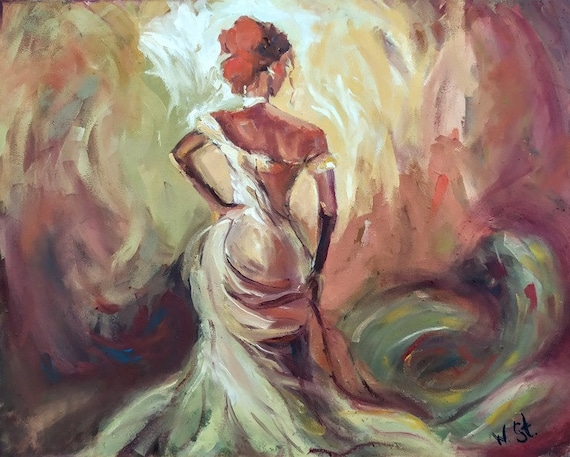The Function of Emotion and Expression in Metaphorical Oil Painting: An In-Depth Analysis of Subject and Composition
The interplay of feeling and expression in metaphorical oil paint offers as a critical lens through which one can take a look at the intricate relationship in between subject issue and make-up. Artists harness numerous strategies, from color option to brushstroke dynamics, to cultivate emotional vibration within their works.
Recognizing Emotion in Art
Feeling in art functions as an effective avenue for expression, enabling musicians to communicate complex sensations with their work. In metaphorical oil paint, this psychological depth is commonly represented through the depiction of the human number, recording the nuances of human experience. The option of topic, shade scheme, and brushwork all add to the emotional resonance of an item.
Artists frequently attract upon individual experiences, social concerns, or global styles to stimulate sensations in the viewer. A portrait may reflect susceptability, while a dynamic figure in movement can represent freedom or turmoil. These psychological strings link the visitor to the art work, cultivating a discussion that transcends the visual medium.
Furthermore, the interaction between light and shadow can enhance psychological strength, assisting the customer's look and accentuating particular aspects within the make-up. The use of appearance in oil painting further includes layers of complexity, welcoming a tactile reaction that enhances the psychological experience. In general, comprehending emotion in art is crucial for valuing the subtleties that identify metaphorical oil painting, as it transforms mere depiction into an extensive exploration of the human condition.
Crucial Element of Make-up
In the world of figurative oil paint, the composition functions as the underlying framework that arranges aesthetic components and boosts the psychological narrative. Vital components of composition consist of equilibrium, contrast, focal factor, and rhythm, each adding to the total effect of the art work.
Equilibrium refers to the distribution of visual weight within the painting, which can be attained with in proportion or unbalanced plans. A well-balanced make-up offers security, enabling the viewer to engage with the piece sympathetically - figurative oil painting. Contrast, on the other hand, includes comparing different aspects, such as dark and light or warm and amazing shades, to direct the customer's eye and stimulate emotional actions
The centerpiece is important, as it directs attention to the most considerable component of the paint, typically highlighting the emotional core of the story. Via methods like shade saturation or positioning, musicians can highlight this location effectively. Rhythm pertains to the rep of aspects, creating a feeling of motion and flow throughout the make-up. By masterfully integrating these crucial aspects, artists can craft mentally resonant and engaging metaphorical oil paints that astound and involve their target market.
Topic and Its Effect
Subject plays a crucial function in figurative oil painting, as it not just serves as the foundation for the story yet likewise shapes the audience's interpretation and psychological involvement with the art work. The selection of topic-- be it a solitary figure, a group dynamic, or a thematic representation-- straight influences the emotional atmosphere shared to the audience.

As an example, pictures commonly evoke personal connections, exposing the details of human expression and character, while scenes showing public tasks can create a feeling of belonging or fond memories. The historic and cultural context of the subject issue enriches the visitor's understanding, triggering much deeper reflections on social standards, values, and the human problem.
Different subject issues additionally generate varying levels of involvement; see this website a remarkable dispute illustrated with numbers in tension may generate sensations of stress and anxiety or compassion, while calm landscapes can conjure up peace and contemplation. Eventually, the impact of subject matter in figurative oil painting is extensive, as it works as a channel for emotional vibration, directing the customer's action and analysis, and fostering a connection in between the onlooker and the artwork. This interaction is important for the successful interaction of the musician's intent.
Strategies for Evoking Feelings
The effectiveness of figurative oil painting in sharing feelings is significantly influenced by the strategies utilized by the musician. One of the most important techniques is the use of shade theory, where the strategic option of shades can evoke particular psychological reactions. Warm colors, such as reds and oranges, typically elicit feelings of enthusiasm or aggressiveness, while cooler tones like blues and greens have a tendency to stimulate peace or sadness.
One more crucial technique is the manipulation of light and shadow, referred to as chiaroscuro. This technique enhances the three-dimensionality of figures, developing significant contrasts that can intensify psychological depth. The positioning of light can assist visitors' emotions, highlighting specific components of the make-up.
Brushwork likewise plays an essential role; loose, expressive strokes can communicate energy and spontaneity, whereas smoother strategies might suggest harmony or precision. Additionally, the setup of subjects within the composition can affect psychological effect. Close proximity can suggest affection, while range might indicate seclusion.
Eventually, the mix of these techniques enables artists to craft narratives that reverberate with the customer, transforming a plain visual experience right into an expressive psychological journey. - figurative oil painting

Case Researches of Noteworthy Works
Examining notable works of metaphorical oil painting reveals how different methods are employed to stimulate effective feelings. One excellent case is Edvard Munch's "The Scream," where the distorted figure and swirling history communicate existential dread. Munch's usage of shade-- brilliant oranges and deep blues-- magnifies the psychological impact, showcasing exactly how palette selections can form viewer experience.
One more considerable job is Pablo Picasso's "Les Demoiselles d'Avignon." Here, vibrant brushstrokes and fragmented types show a turbulent emotional landscape, testing traditional depictions of the female figure. Picasso's ingenious composition not only records the visitor's attention yet also welcomes consideration on themes of identification and sexuality.
In Addition, Frida Kahlo's "The 2 Fridas" uses a poignant expedition of duality and self-identity. The different numbers, linked by a common heart, exhibit Kahlo's emotional depth and individual narrative. figurative oil painting. Her careful attention to detail and symbolic aspects serve to engage viewers on a visceral degree
These instance research studies emphasize the profound link between feeling and composition in figurative oil painting, exposing how artists harness technique to connect complex sensations and stories that resonate across time and culture.

Final Thought
To conclude, the interplay of emotion and expression in metaphorical oil paint significantly improves the viewer's experience and interpretation of the artwork. With a careful selection of topic and compositional methods, musicians communicate profound narratives that reverberate on both individual and universal degrees. The application of shade brushwork, theory, and chiaroscuro additional intensifies psychological deepness, transforming each canvas into a powerful representation imp source of the complexities of the human experience.
In figurative oil paint, this psychological depth is commonly depicted through the representation of the human figure, catching the nuances of human experience.Moreover, the interplay between light and shadow can amplify psychological strength, directing the visitor's look and attracting interest to certain components within the composition. The usage of appearance in oil paint further includes layers of find this complexity, inviting a responsive reaction that improves the emotional experience.The focal point is essential, as it guides focus to the most considerable component of the paint, frequently highlighting the emotional core of the story. Eventually, the impact of subject issue in metaphorical oil painting is profound, as it offers as an avenue for psychological resonance, directing the visitor's response and analysis, and cultivating a link between the artwork and the viewer.